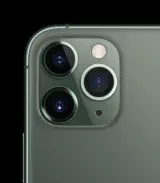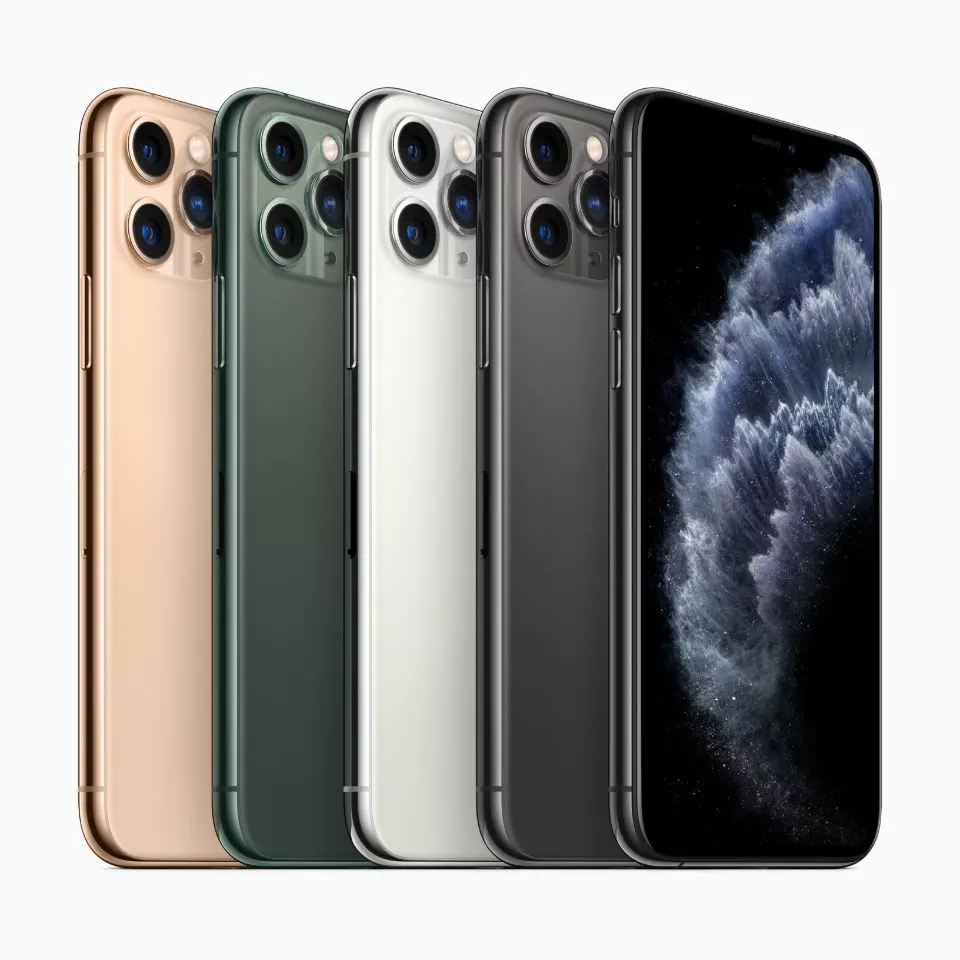Apple iPhone 8 Plus - Mobil...
It isn’t lost on modern smartphone users that...
By Zora Flatley2732

0

In the realm of high-end smartphones, few gadgets are as anticipated as Apple’s iconic iPhones. After nearly 13 years in business and over 2 billion phones sold worldwide, last year’s 14th generation (2019) is no exception to the rule. Apple has managed to build itself quite a reputation over the years, pioneering stylish and impeccably-crafted products for both avid tech enthusiasts and casual users.
Now, with an updated design, powerful specs, plenty of battery life, and a sophisticated triple-lens camera, that’s bound to satisfy even the most demanding of photographers, the iPhone 11 Pro is an exquisite choice for users seeking excellent performance, quality, and versatility. All in a one-hand-friendly form factor.
Release Date and Pricing
Apple officially launched the iPhone 11 Pro on September 20th, 2019, along with its younger brother the iPhone 11, and the more expensive iteration, the 11 Pro Max. They replaced the XR, XS, and XS Max models from the previous year.
Upon its release, the 11 Pro displayed a record-breaking entry price tag of $999 (64GB version), making it one of the most expensive phones on the market. The 256GB and 512GB models retail for $1,149 and $1,349, respectively.
Design
Faced with growing and ruthless competition, Apple knew it had to strike big. The brand’s statement came in the form of a revamped, slick design for its newest flagship phone. The iPhone 11 Pro (along with the Pro Max version) features an all-metal contour, borrowed from the two previous generations, which includes a frosted, and quite frankly very sexy, glass back.
While it’s pleasant to look at and feels smooth to the touch, it will shatter just as easily as regular glass if dropped from a fair height. Size-wise, the iPhone 11 Pro dimensions are slightly larger than the previous XS (at 144 x 71.4 x 8.1 mm), and weighs a tad more (188g versus 177g).
In regard to color choices, we’re offered the classic space grey, timeless silver, and chic gold iterations, along with a new midnight green signature shade that’s proving quite popular among Apple fans. Whether we like them or not, iPhones are without a doubt some of the most beautifully-designed phones in existence.
Display
The 11 Pro boasts a blazing 5.8-inch Super Retina XDR (OLED) display, with a 2,436 x 1,125 pixel resolution. Integrated HDR technology allows for a superbly accurate color reproduction. The screen itself is manufactured with scratch-resistant gorilla glass and an oleophobic (oil-resistant) coating for optimum damage protection.
As far as screen-to-body ratio, the 11 Pro scores a commendable 82.1%; a fair figure when compared to its direct competitor, the Samsung S10, and its impressive 87.11% screen-to-body ratio (the iPhone’s black notch, on top of the screen, seems to bother a lot of tech purists).
Apple has also perpetuated its True Tone feature, which automatically adjusts screen brightness according to ambient lighting, helping reduce harmful blue light emissions. The 11 Pro comes with an improved capacitive and multi-point touchscreen (known as Haptic Touch) that guarantees intuitiveness and ease of use.
After having banished its fingerprint-integrated home button back in 2017, with the X model, Apple now entirely relies on Face ID to allow phone unlock; a regrettable and restrictive choice, seeing as competing manufacturers have managed to maintain both options in their flagships.

Performance
Despite a relatively compact size, when it comes to performance specs, the 11 Pro is a genuine beast. It comes equipped with a state-of-the-art A13 Bionic, third-generation Neural Engine chipset, and is powered by 4GB of RAM memory, supporting heavy apps and multitasking with ultimate ease.
The four-core GPU graphics processor makes video playback, gaming, and other common activities a smooth and glitch-free experience; all this encased in a waterproof and dustproof body. As far as storage capacities go, we’re offered the standard 64, 256, and 512GB versions.
Sadly, yet again, the Silicon Valley firm chose not to include an option for an expandable storage slot, unlike most of its industry rivals (Samsung, Sony, Motorola, LG…). While on the subject of downsides, the iPhone 11 Pro isn’t exactly a future-proof smartphone, seeing as it does not support 5G technology; we might have to wait for this year’s new iPhone 12 (late 2020) to witness this feature finally integrated in Apple phones.
Lastly, while the 11 Pro was initially launched with iOS 13, it is now compatible with the new and improved iOS 14 operating system, which was made available in mid-September of 2020.
Battery
A recurring complaint of Apple users is that iPhone batteries tend to drain fast. Speculations and rumors of planned obsolescence aside, this has proven a particularly irritating setback for a great deal of users. After all, with modern digitalization, we’re more than ever compelled to rely on our smartphones for both professional and leisure purposes (calling, texting, e-mailing, social media, music, photography and videography, gaming, etc.).
In that optic, for the 2019 iPhone 11 line, Apple did listen to customer feedback and made remarkable efforts to optimize its products’ battery life. With a Li-Ion 3190 mAh (non-removable) battery, you can expect autonomy of up to 10 to 14 hours with a single full charge on your 11 Pro.
This should be enough to last you throughout the day. In addition to the wireless charging feature that has been around since the 8 and 8 Plus, the 2019 model also allows for convenient fast-charging; users can gain over 50% in just a half-hour with the provided 18-watt charger brick (the box comes with a USB-C to lightning cable).
Camera
The camera is inarguably the most exciting feature of this 11 Pro model. It’s considered one, if not the best on any modern smartphone. Just like the Pro Max version, on the rear, we find a newly designed 12MP triple-lens camera encased in sapphire crystal; a 13mm ultra-wide, a 26mm wide lens, as well as a 52mm telephoto lens.
Their aperture ranges from ƒ/1.8 to ƒ/2.4 for a professional-grade depth-of-field effect. The cameras offer a 2x optical zoom in and zoom out, and a 10x digital zoom. Coupled with advanced image stabilization and a variety of in-app settings and options, this allows for crisp, detailed photos with well-rendered color accuracy.
Aside from an improved quad-LED dual-tone flash, the 11 Pro also features a brand new Night Mode to shoot in poorly-lit environments, delivering impressive results. On the front of the phone sits a 12MP True Depth camera that’s ideal for taking selfies and FaceTime sessions. Lastly, as far as video recording, the iPhone 11 Pro excels on all fronts.
The camera bundle allows for shooting in 720p, 1020p, or 4K, at up to 60 frames per second, with integrated autofocus and cinematic stabilization. Moreover, you’ll be able to film slow-motion and time-lapse clips with unparalleled quality. If you’re planning to use your 11 Pro as a gadget for photography and videography, you’d best acquire the 256 or 512GB model.
Final Verdict
Ultimately, the engineers over at Apple truly outdid themselves with the iPhone 11 Pro. With a novel design, high-end specs, improved battery life, and an industry-leading camera, this model has everything to be the perfect smartphone… if it weren’t for the astronomical price tag! And since no one knows whether the upcoming release will in fact carry 5G signal, or what ground-breaking features it will include this time, purchasing an 11 Pro can be safely considered an excellent choice for a smartphone in 2020.
Updated 4 years ago